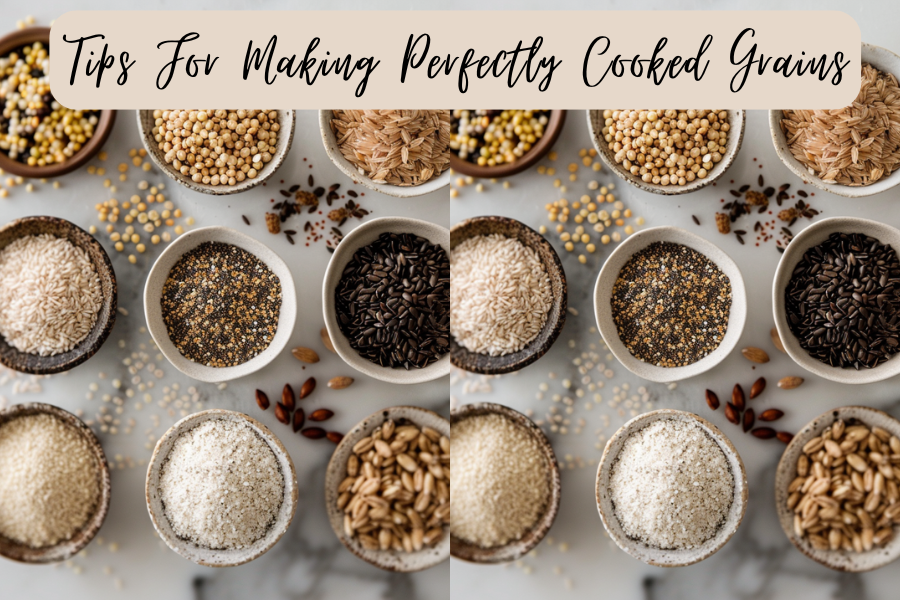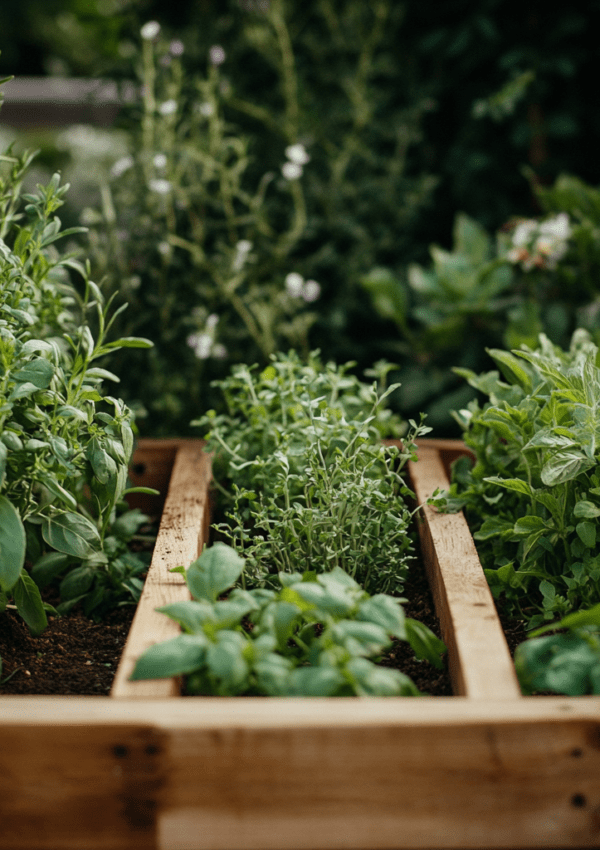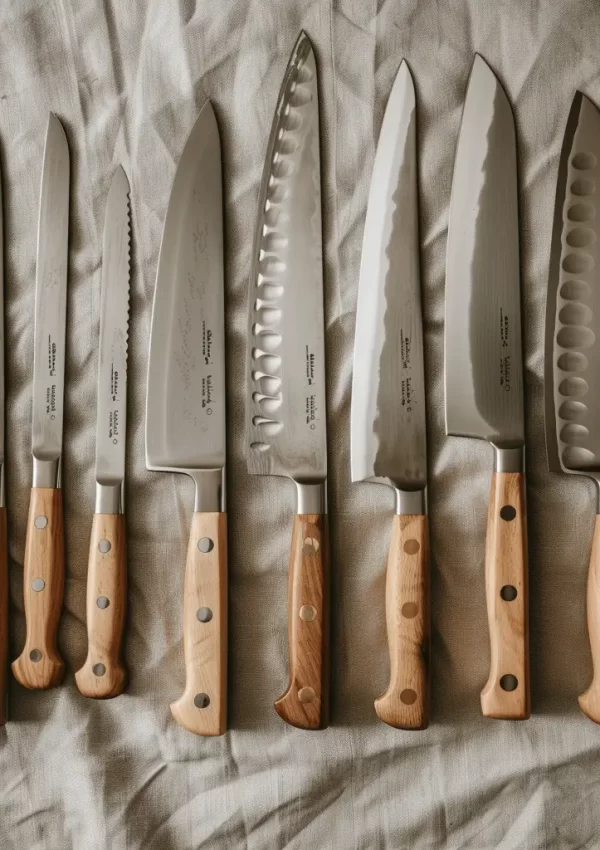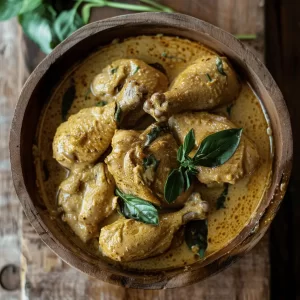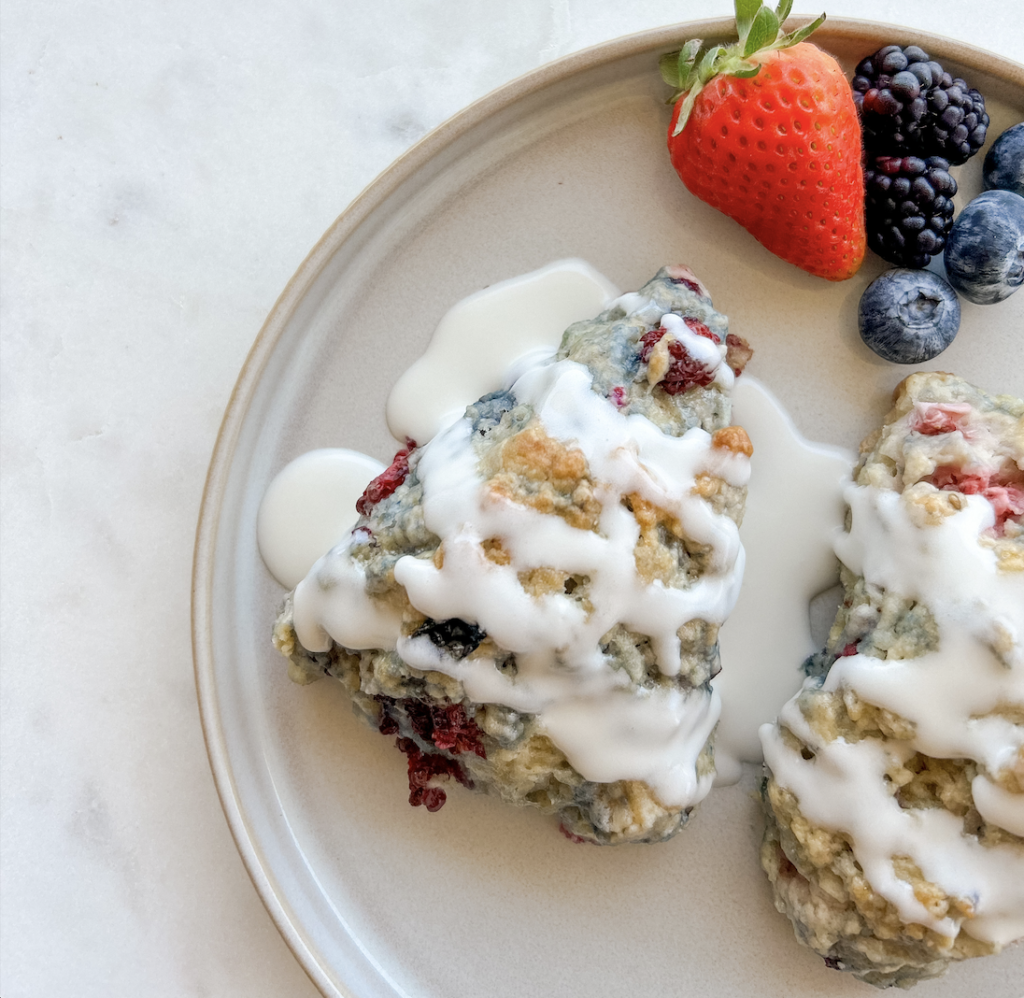This post contains affiliate links, which means I’ll receive a commission if you purchase through my link, at no extra cost to you. Please read the full disclosure here.
Perfectly cooked grains are the cornerstone of many delicious meals, providing a nutritious and satisfying base. Whether you’re making a hearty salad, a comforting side dish, or a main course, mastering the art of cooking grains can elevate your culinary creations. Let’s explore the tips and techniques to get it right every time.
This post is all about Grain Tips!
Types of Grains
Understanding the different types of grains is the first step. Here are some common grains and their unique characteristics:
- Rice: Versatile and available in many varieties like white, brown, basmati, and jasmine.
- Quinoa: Nutritious and comes in red, white, and black varieties.
- Barley: Available as hulled or pearled, each with different cooking requirements.
- Millet: A small, round grain with a mild flavor.
- Farro: An ancient grain with a chewy texture and nutty flavor.
- Bulgur: Cracked wheat that cooks quickly.
- Couscous: A North African staple made from semolina wheat.
[the_ad id=”3378″]
Essential Equipment
Having the right tools makes grain cooking easier and more efficient:
- Heavy-Bottomed Pots with Lids: Ensures even cooking and prevents burning.
- Fine-Mesh Sieves: Useful for rinsing grains.
- Measuring Cups and Spoons: For accurate water-to-grain ratios.
- Wooden Spoons or Spatulas: Gentle on grains.
- Rice Cooker or Instant Pot: Great for convenience.
General Tips for Cooking Grains
Here’s a guide to cooking grains perfectly:
Rinse Grains
Rinsing removes excess starch, preventing clumping, and enhances flavor.
Water-to-Grain Ratio
Follow the recommended ratio for each grain. Too much water makes grains mushy; too little leaves them undercooked.
Boil, Then Simmer
Bring water to a boil, add grains, then reduce to a simmer. This ensures even cooking.
Protein Denaturation: Heat denatures proteins, changing their structure and texture.
Cooking Times
Stick to the suggested times but check grains for doneness. Different grains have different cooking times.
Gelatinization: Heat and water cause starches in grains to swell and gelatinize, creating a tender texture.
Resting
Let grains rest off the heat, covered, for a few minutes after cooking to allow them to finish steaming and firm up.
[the_ad id=”3378″]
Specific Tips for Different Grains
Each grain has its quirks. Here are specific tips for some popular ones:
Rice
- Absorption Method: Boil water, add rice, cover, reduce heat, and cook until water is absorbed.
- Fluffy Rice: Let rice sit covered for 5-10 minutes after cooking, then fluff with a fork.
Water Absorption: Grains absorb water and expand. Proper water-to-grain ratio ensures the right texture.
Quinoa
- Pre-Rinse: Removes saponin, a bitter coating.
- Toasting: Enhances flavor before adding water.
Barley
- Hulled vs. Pearled: Hulled barley takes longer to cook. Soak it first to reduce cooking time.
Millet
- Dry Toasting: Adds a nutty flavor.
- Fluffing: Prevents clumping by fluffing with a fork after cooking.
Farro
- Soaking: Improves texture and reduces cooking time.
- Pasta Method: Cook in ample water, then drain.
Bulgur
- No-Cook Method: Just soak in boiling water until tender.
- Hydration Tips: Adjust the water amount for the desired texture.
Couscous
- Steaming: Traditional method for fluffy grains.
- Quick-Cook Method: Pour boiling water over couscous, cover, and let it absorb.
[the_ad id=”3378″]
Common Mistakes to Avoid
Avoid these pitfalls for perfect grains:
Skipping the Rinse
Can lead to clumpy, sticky grains.
Incorrect Water-to-Grain Ratio
Too much or too little water affects texture and doneness.
Lifting the Lid Too Often
Disrupts the cooking process and steam escape.
Not Allowing Rest
Skipping the rest period can result in uneven texture.
[the_ad id=”3378″]
Storage and Reheating Tips
Store and reheat grains properly to maintain their quality:
- Storage:
- Keep cooked grains in airtight containers in the refrigerator for up to 5 days.
- Reheating:
- Reheat on the stovetop with a splash of water or broth, or microwave with a damp paper towel to retain moisture.
- Freezing:
- Freeze cooked grains in single-serving portions for up to 3 months. Thaw in the refrigerator before reheating.
Perfectly cooked grains are achievable with the right techniques and understanding. Experiment with different grains and methods to discover your favorites. Share your tips and experiences with us, and let’s keep the conversation going about the delicious world of grains!
This post was all about Grain Tips!
Ready to master the art of cooking grains? Try out these tips and let us know how it goes! Make sure to tag me @thespicegirlkitchen_ on Instagram or @thespicegirlkitchen on TikTok!

